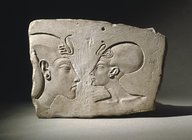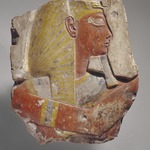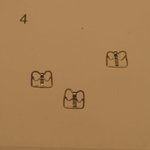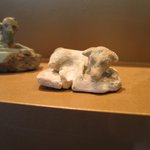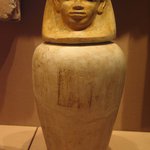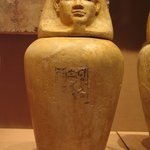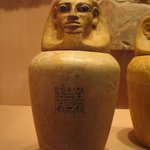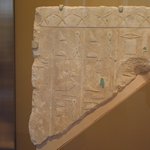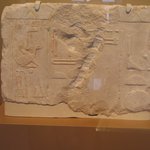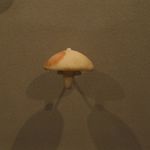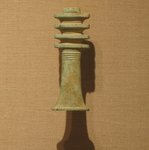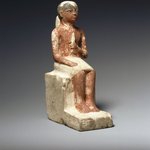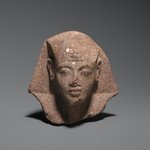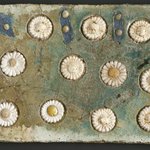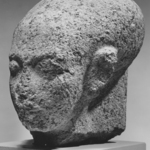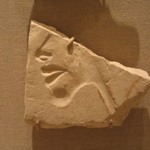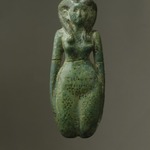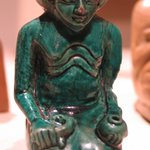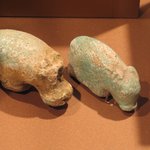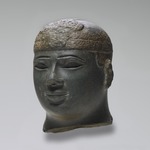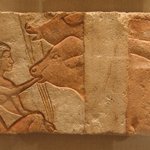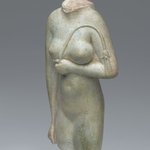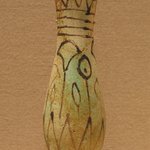

The Wilbour Plaque, ca. 1352–1336 B.C.E. or slightly later. Limestone, pigment, 6 3/16 × 8 11/16 × 1 5/8 in. (15.7 × 22.1 × 4.1 cm). Brooklyn Museum, Gift of Evangeline Wilbour Blashfield, Theodora Wilbour, and Victor Wilbour honoring the wishes of their mother, Charlotte Beebe Wilbour, as a memorial to their father, Charles Edwin Wilbour, 16.48. Creative Commons-BY (Photo: Brooklyn Museum, 16.48_SL1.jpg)

The Wilbour Plaque, ca. 1352–1336 B.C.E. or slightly later. Limestone, pigment, 6 3/16 × 8 11/16 × 1 5/8 in. (15.7 × 22.1 × 4.1 cm). Brooklyn Museum, Gift of Evangeline Wilbour Blashfield, Theodora Wilbour, and Victor Wilbour honoring the wishes of their mother, Charlotte Beebe Wilbour, as a memorial to their father, Charles Edwin Wilbour, 16.48. Creative Commons-BY (Photo: Brooklyn Museum, 16.48_bw_IMLS.jpg)
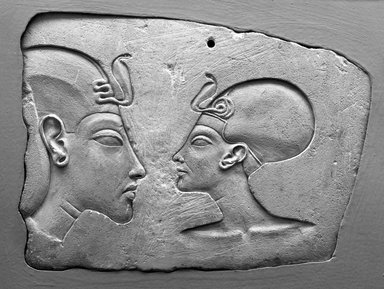
The Wilbour Plaque, ca. 1352–1336 B.C.E. or slightly later. Limestone, pigment, 6 3/16 × 8 11/16 × 1 5/8 in. (15.7 × 22.1 × 4.1 cm). Brooklyn Museum, Gift of Evangeline Wilbour Blashfield, Theodora Wilbour, and Victor Wilbour honoring the wishes of their mother, Charlotte Beebe Wilbour, as a memorial to their father, Charles Edwin Wilbour, 16.48. Creative Commons-BY (Photo: Brooklyn Museum, 16.48_detail_bw_IMLS.jpg)
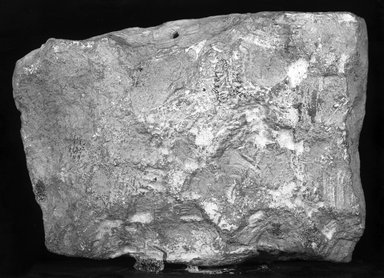
The Wilbour Plaque, ca. 1352–1336 B.C.E. or slightly later. Limestone, pigment, 6 3/16 × 8 11/16 × 1 5/8 in. (15.7 × 22.1 × 4.1 cm). Brooklyn Museum, Gift of Evangeline Wilbour Blashfield, Theodora Wilbour, and Victor Wilbour honoring the wishes of their mother, Charlotte Beebe Wilbour, as a memorial to their father, Charles Edwin Wilbour, 16.48. Creative Commons-BY (Photo: Brooklyn Museum, 16.48_back_bw_IMLS.jpg)
The Wilbour Plaque
Egyptian, Classical, Ancient Near Eastern Art
On View: Amarna Period, Martha A. and Robert S. Rubin Gallery, 3rd Floor
